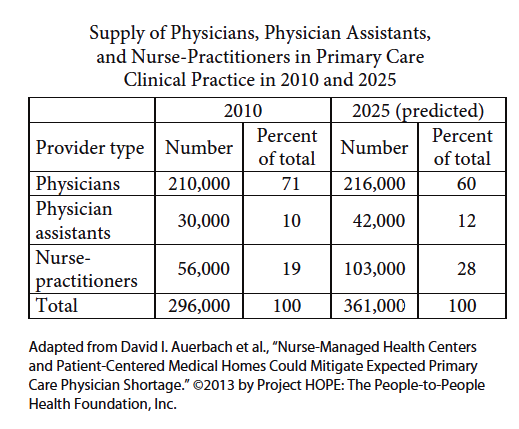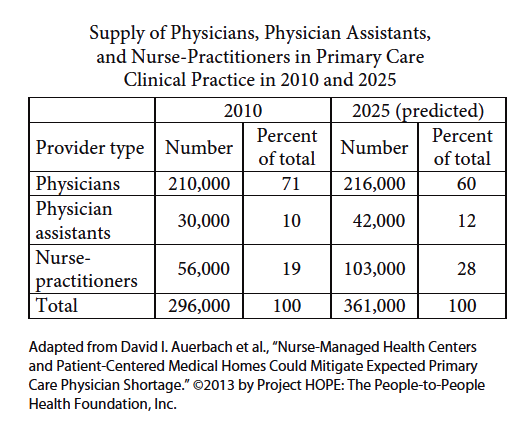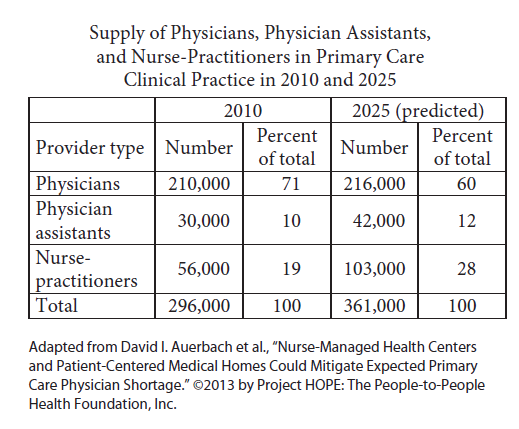Assertion: The recombinant therapeutics do not induce unwanted immunological responses.
Reason :About 30 recombinant therapetics have been approved for human use world -wide
If both Assertion & Reason are True & the Reason is a correct explanation of the Assertion
It both Assertion & Reason are True but Reason is not a correct explanation of the Assetion
If Assertion is True but the Reason is False
If both Assertion & Reason are false
The correct Answer is:B
Step-by-Step Solution:
1. Understanding the Assertion and Reason:
- The assertion states that recombinant therapeutics do not induce unwanted immunological responses.
- The reason states that about 30 recombinant therapeutics have been approved for human use worldwide.
2. Evaluating the Assertion:
- The assertion is true. Recombinant therapeutics, which are produced using recombinant DNA technology, are designed to be safe and effective. They are less likely to provoke an immune response compared to proteins derived from non-human sources.
3. Evaluating the Reason:
- The reason is also true. As of now, approximately 30 recombinant therapeutics have indeed been approved for human use globally. This includes various therapeutic proteins that have been developed through recombinant DNA technology.
4. Connecting Assertion and Reason:
- The reason provided supports the assertion. The approval of these therapeutics indicates their safety and efficacy, which aligns with the assertion that they do not induce unwanted immunological responses.
5. Conclusion:
- Both the assertion and reason are true, and the reason correctly explains the assertion. Therefore, the correct answer is that both statements are true, and the reason is a correct explanation of the assertion.
Final Answer:
Both the assertion and the reason are true, and the reason is a correct explanation of the assertion.
---
- The assertion states that recombinant therapeutics do not induce unwanted immunological responses.
- The reason states that about 30 recombinant therapeutics have been approved for human use worldwide.
- The assertion is true. Recombinant therapeutics, which are produced using recombinant DNA technology, are designed to be safe and effective. They are less likely to provoke an immune response compared to proteins derived from non-human sources.
- The reason is also true. As of now, approximately 30 recombinant therapeutics have indeed been approved for human use globally. This includes various therapeutic proteins that have been developed through recombinant DNA technology.
- The reason provided supports the assertion. The approval of these therapeutics indicates their safety and efficacy, which aligns with the assertion that they do not induce unwanted immunological responses.
- Both the assertion and reason are true, and the reason correctly explains the assertion. Therefore, the correct answer is that both statements are true, and the reason is a correct explanation of the assertion.
Both the assertion and the reason are true, and the reason is a correct explanation of the assertion.
Topper's Solved these Questions
- BIOTECHNOLOGY AND MICROBES IN HUMAN WELFAREBOOK - ALLENCHAPTER - BIOTECHNOLOGY AND MICROBES IN HUMAN WELFAREEXERCISE - Exercise I
60 Videos
- BIOTECHNOLOGY AND MICROBES IN HUMAN WELFAREBOOK - ALLENCHAPTER - BIOTECHNOLOGY AND MICROBES IN HUMAN WELFAREEXERCISE - ExerciseII
18 Videos
- BIOTECHNOLOGY AND MICROBES IN HUMAN WELFAREBOOK - ALLENCHAPTER - BIOTECHNOLOGY AND MICROBES IN HUMAN WELFAREEXERCISE - Exercise III
10 Videos
- BIOTECHNOLOGY AND ITS APPLICATION BOOK - ALLENCHAPTER - BIOTECHNOLOGY AND ITS APPLICATION EXERCISE - Question
57 Videos
- BODY FLUIDS AND CIRCULATIONBOOK - ALLENCHAPTER - BODY FLUIDS AND CIRCULATIONEXERCISE - S
45 Videos
Similar Questions
Knowledge Check
How many recombinant therapeutics worldwide have been approved for human use ?
A13B25C30D40The Physician Assistant Will See You Now
23 The term “paramedics” refers to health care workers who provide routine and clinical services.–––––––––––––––––––––––––––––––––––––––––––––––––––––––––––––––––––––––––––––––––––––––––––––––––––––– While the pressures of an aging population, insurance reforms, and health epidemics have increased demand for care, the supply of physicians is not expected to 24 keep pace.––––––––––– The Association of American Medical Colleges predicts a shortage of over 90,000 physicians by 2020, by 2025, that number could climb to more than 130,000. In some parts of the country, shortages are already a sad fact of life. A 2009 report by the Bureau of Health Professions notes that although a fifth of the US population lives in rural areas, less than a tenth of US physicians serves that population. Because a traditionalist response to the crisis— 25 amping up–––––––––––– medical-college enrollments and expanding physician training programs—is too slow and costly to address the near-term problem, alternatives are being explored. One promising avenue has been greater reliance on physician assistants (PAs).
26 By virtue of 27 there–––––– medical training, PAs can perform many of the jobs traditionally done by doctors, including treating chronic and acute conditions, performing minor 28 surgeries: and––––––––––––––– prescribing some medications. However, although well 29 compensated earning in 2012 a median annual salary of $90,930,––––––––––––––––––––––––––––––––––––––––––––––––––––––––––––––––––––– PAs cost health care providers less than do the physicians who might otherwise undertake these tasks. Moreover, the training period for PAs is markedly shorter than 30 those for–––––––––– physicians—two to three years versus the seven to eleven required for physicians.
Physician assistants already offer vital primary care in many locations. Some 90,000 PAs were employed nationwide in 2012. Over and above their value in partially compensating for the general physician shortage has been their extraordinary contribution to rural health care. A recent review of the scholarly literature by Texas researchers found that PAs lend cost-efficient, widely appreciated services in underserved areas. 31 In addition,––––––––––––– rural-based PAs often provide a broader spectrum of such services than do their urban and suburban counterparts, possibly as a consequence of the limited pool of rural-based physicians.
Increasingly, PAs and other such medical practitioners have become a critical complement to physicians. A 2013 RAND Corporation report estimates that while the number of primary care physicians will increase slowly from 2010 to 2025, the number of physician assistants and nurse-practitioners in primary care will grow at much faster rates. 32 Both by merit and from necessity, PAs are likely to greet more 33 patience than––––––––––––––– ever before.
 ANO CHANGEBmaintain the tempo.Cget in line.Dmove along.
ANO CHANGEBmaintain the tempo.Cget in line.Dmove along.The Physician Assistant Will See You Now
23 The term “paramedics” refers to health care workers who provide routine and clinical services.–––––––––––––––––––––––––––––––––––––––––––––––––––––––––––––––––––––––––––––––––––––––––––––––––––––– While the pressures of an aging population, insurance reforms, and health epidemics have increased demand for care, the supply of physicians is not expected to 24 keep pace.––––––––––– The Association of American Medical Colleges predicts a shortage of over 90,000 physicians by 2020, by 2025, that number could climb to more than 130,000. In some parts of the country, shortages are already a sad fact of life. A 2009 report by the Bureau of Health Professions notes that although a fifth of the US population lives in rural areas, less than a tenth of US physicians serves that population. Because a traditionalist response to the crisis— 25 amping up–––––––––––– medical-college enrollments and expanding physician training programs—is too slow and costly to address the near-term problem, alternatives are being explored. One promising avenue has been greater reliance on physician assistants (PAs).
26 By virtue of 27 there–––––– medical training, PAs can perform many of the jobs traditionally done by doctors, including treating chronic and acute conditions, performing minor 28 surgeries: and––––––––––––––– prescribing some medications. However, although well 29 compensated earning in 2012 a median annual salary of $90,930,––––––––––––––––––––––––––––––––––––––––––––––––––––––––––––––––––––– PAs cost health care providers less than do the physicians who might otherwise undertake these tasks. Moreover, the training period for PAs is markedly shorter than 30 those for–––––––––– physicians—two to three years versus the seven to eleven required for physicians.
Physician assistants already offer vital primary care in many locations. Some 90,000 PAs were employed nationwide in 2012. Over and above their value in partially compensating for the general physician shortage has been their extraordinary contribution to rural health care. A recent review of the scholarly literature by Texas researchers found that PAs lend cost-efficient, widely appreciated services in underserved areas. 31 In addition,––––––––––––– rural-based PAs often provide a broader spectrum of such services than do their urban and suburban counterparts, possibly as a consequence of the limited pool of rural-based physicians.
Increasingly, PAs and other such medical practitioners have become a critical complement to physicians. A 2013 RAND Corporation report estimates that while the number of primary care physicians will increase slowly from 2010 to 2025, the number of physician assistants and nurse-practitioners in primary care will grow at much faster rates. 32 Both by merit and from necessity, PAs are likely to greet more 33 patience than––––––––––––––– ever before.
 ANO CHANGEBsurgeries, andCsurgeries, and,Dsurgeries, and
ANO CHANGEBsurgeries, andCsurgeries, and,Dsurgeries, and
Consider the following statement about therapeutic drugs:
I) Recombinant DNA technology is used for production of therapeutic drugs which are safe and effective.
II) It avoid unwanted immunological responses commonly observed with similar products isolated from non human sources.
III) About thirty recombinant therapeutics have been approved for human use in India.
Which of the following statements given above are correct?
View SolutionFind out which among the following is true and which is false
(i) Recombinant DNA technology has made it possible to engineer microbes, plants and animals such that they have novel capabilities.
(ii) Genetically modified organisms have been created by using methods other than natural methods to transfer one or more genes from organism to another, generally using techniques such as recombinant DNA technology.
(iii) GM plants have been useful in increasing crop yields, reduce post harvest losses and make crops more tolerant of stressess.
(iv) Recombinant DNA technology process have made immense impact in the area of healthcare by enabling mass production of safe and more effective therapeutics.
(v) since the recombinant therapeutics are identical to human proteins, they do not induced unwanted immunological responses.
View SolutionA : Recombinant DNA technologies process has been less effective in therapeutic drug production.
R : Recombinant therapeutics induce unwanted immunological responses.
View SolutionThe Physician Assistant Will See You Now
23 The term “paramedics” refers to health care workers who provide routine and clinical services.–––––––––––––––––––––––––––––––––––––––––––––––––––––––––––––––––––––––––––––––––––––––––––––––––––––– While the pressures of an aging population, insurance reforms, and health epidemics have increased demand for care, the supply of physicians is not expected to 24 keep pace.––––––––––– The Association of American Medical Colleges predicts a shortage of over 90,000 physicians by 2020, by 2025, that number could climb to more than 130,000. In some parts of the country, shortages are already a sad fact of life. A 2009 report by the Bureau of Health Professions notes that although a fifth of the US population lives in rural areas, less than a tenth of US physicians serves that population. Because a traditionalist response to the crisis— 25 amping up–––––––––––– medical-college enrollments and expanding physician training programs—is too slow and costly to address the near-term problem, alternatives are being explored. One promising avenue has been greater reliance on physician assistants (PAs).
26 By virtue of 27 there–––––– medical training, PAs can perform many of the jobs traditionally done by doctors, including treating chronic and acute conditions, performing minor 28 surgeries: and––––––––––––––– prescribing some medications. However, although well 29 compensated earning in 2012 a median annual salary of $90,930,––––––––––––––––––––––––––––––––––––––––––––––––––––––––––––––––––––– PAs cost health care providers less than do the physicians who might otherwise undertake these tasks. Moreover, the training period for PAs is markedly shorter than 30 those for–––––––––– physicians—two to three years versus the seven to eleven required for physicians.
Physician assistants already offer vital primary care in many locations. Some 90,000 PAs were employed nationwide in 2012. Over and above their value in partially compensating for the general physician shortage has been their extraordinary contribution to rural health care. A recent review of the scholarly literature by Texas researchers found that PAs lend cost-efficient, widely appreciated services in underserved areas. 31 In addition,––––––––––––– rural-based PAs often provide a broader spectrum of such services than do their urban and suburban counterparts, possibly as a consequence of the limited pool of rural-based physicians.
Increasingly, PAs and other such medical practitioners have become a critical complement to physicians. A 2013 RAND Corporation report estimates that while the number of primary care physicians will increase slowly from 2010 to 2025, the number of physician assistants and nurse-practitioners in primary care will grow at much faster rates. 32 Both by merit and from necessity, PAs are likely to greet more 33 patience than––––––––––––––– ever before.

Which choice is the best introduction to the paragraph?
View SolutionThe Physician Assistant Will See You Now
23 The term “paramedics” refers to health care workers who provide routine and clinical services.–––––––––––––––––––––––––––––––––––––––––––––––––––––––––––––––––––––––––––––––––––––––––––––––––––––– While the pressures of an aging population, insurance reforms, and health epidemics have increased demand for care, the supply of physicians is not expected to 24 keep pace.––––––––––– The Association of American Medical Colleges predicts a shortage of over 90,000 physicians by 2020, by 2025, that number could climb to more than 130,000. In some parts of the country, shortages are already a sad fact of life. A 2009 report by the Bureau of Health Professions notes that although a fifth of the US population lives in rural areas, less than a tenth of US physicians serves that population. Because a traditionalist response to the crisis— 25 amping up–––––––––––– medical-college enrollments and expanding physician training programs—is too slow and costly to address the near-term problem, alternatives are being explored. One promising avenue has been greater reliance on physician assistants (PAs).
26 By virtue of 27 there–––––– medical training, PAs can perform many of the jobs traditionally done by doctors, including treating chronic and acute conditions, performing minor 28 surgeries: and––––––––––––––– prescribing some medications. However, although well 29 compensated earning in 2012 a median annual salary of $90,930,––––––––––––––––––––––––––––––––––––––––––––––––––––––––––––––––––––– PAs cost health care providers less than do the physicians who might otherwise undertake these tasks. Moreover, the training period for PAs is markedly shorter than 30 those for–––––––––– physicians—two to three years versus the seven to eleven required for physicians.
Physician assistants already offer vital primary care in many locations. Some 90,000 PAs were employed nationwide in 2012. Over and above their value in partially compensating for the general physician shortage has been their extraordinary contribution to rural health care. A recent review of the scholarly literature by Texas researchers found that PAs lend cost-efficient, widely appreciated services in underserved areas. 31 In addition,––––––––––––– rural-based PAs often provide a broader spectrum of such services than do their urban and suburban counterparts, possibly as a consequence of the limited pool of rural-based physicians.
Increasingly, PAs and other such medical practitioners have become a critical complement to physicians. A 2013 RAND Corporation report estimates that while the number of primary care physicians will increase slowly from 2010 to 2025, the number of physician assistants and nurse-practitioners in primary care will grow at much faster rates. 32 Both by merit and from necessity, PAs are likely to greet more 33 patience than––––––––––––––– ever before.

View Solution
